#United Nations University (UNU)
Text
Together, let's close the gender gap in ICT!
"Today, the persistent unequal digital access keeps women from unlocking technology’s full potential." — Min Yang, UNU MACAU Researcher..
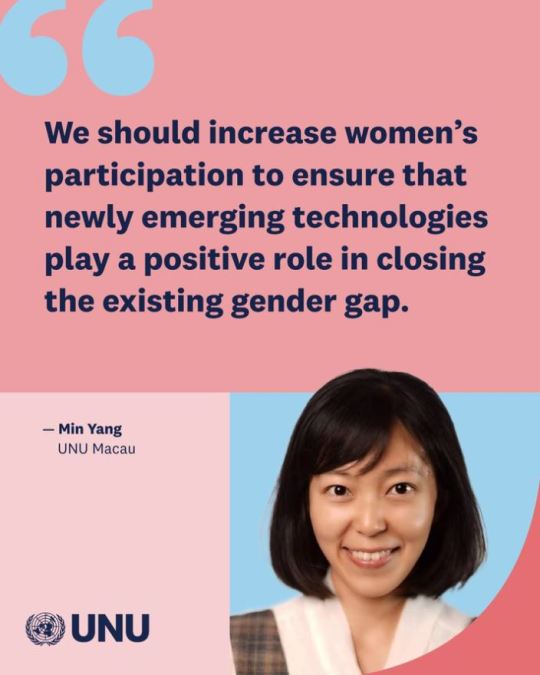
#United Nations University#UNU#Macau#international girls in ict day#girls in ict#digital skills#digital divide#digital gender gap#ict sector#25 april
0 notes
Text
Fighting Slavery: Is there a Role for International Criminal Justice?
The Event entitled "Fighting Slavery: Is there a Role for International Criminal Justice?" (organized by the Permanent Mission of Liechtenstein, in collaboration with the United Nations University (UNU))
0 notes
Text

EARTH-93: PROJECT INTRODUCTION
Hello, all.
I go by the handle "TheMysticSpyral" or just Mystic here on the interwebs, and I've been hashing out a fan project I call "Earth-93" for a few years now. Earth-93 is a simple but sprawling undertaking on my part, an attempt to revise the greater Marvel canon on a fixed, linear timeline. Though I bend this guideline here and there, on the whole I try to adhere to the 4:1 ratio of Marvel Time (Four years of IRL publication time to one year of in-universe continuity) in order to map out how I want events and arcs to develop, and when characters debut or become prominent.
As an example, here's a rough outline I have in mind for "Season 1" of Earth-93, roughly adapting the original 1960's run of comics:
November, 2002 - The Fantastic Four publicly debut.
December, 2002 - Janet Van Dyne is nearly killed in an act of sabotage. Her boyfriend Hank Pym flushes out the bugs within his family's company.
January, 2003 - Project: Gamma goes horribly wrong. Bruce Banner goes on the run. Donald Blake takes a vacation in Norway. He does not return the same man.
March, 2003 - Tony Stark is found in Afghanistan, after being presumed dead three months prior. The X-Men overthrow the Brotherhood of Mutants and their occupation of the nation of Santo Marco.
April, 2003 - Dr. Steven Strange returns from his extended sabbatical in Asia, purchases a townhouse in Greenwich Village as his new residency.
June, 2003 - Matt Murdock begins practicing law. Peter Parker is bitten by a spider during a college campus tour in Empire State University.
September, 2003 - After repeated delays, Reed Richards and Susan Storm hold a Fantastic Wedding in New York City. The Vault prison facility loses power, a Breakout ensues. Five mighty heroes find themselves united against a common threat.
October, 2003 - Captain America appears during a battle in Central Park, having been unearthed from ice deep below the English Channel a month prior.
February, 2004- The newly-crowned King T'Challa hosts a diplomatic visit of his nation of Wakanda.
May, 2004 - Mar-Vell makes his debut as Captain Marvel.
September, 2005- Galactus menaces Earth, but is narrowly repelled by its heroes.
From there, it's a little less squared away, though I absolutely have plans so don't hesitate to ask. In the meantime, I'll say that as a bridge between seasons one and two, I have plans to implement one of many crossover franchises into my Marvel canon, so stay tuned for that.
At the risk of jinxing things, I feel that I've reached a point in life in terms of writing ability, personal scheduling and mental health that I can produce and upload content far more consistently than before, and since I have been intending to branch out to other platforms aside from my starting place of DeviantArt, I may as well use this momentum to do a "soft reboot" of sorts. None of your content I have previously shared on dA will suddenly become non-canon (Though I definitely need to go back and update several details), nor will I stop uploading on dA altogether.
All content uploaded here on Tumblr will be the most official and updated, however, and for the time being will most certainly become my priority, since unlike dA and even Twitter, Tumblr's fate isn't exactly dangling above a bottomless pit at the moment. I will most definitely be posting separate fanworks and pitches down the line, but Earth-93 will very much remain the majority of my content. If "Earth-93" is not in the headline or in the tags, it's its own thing.
MASTER LIST
Fantastic Four
Invisible Woman
Mister Fantastic
Human Torch (Coming Soon!)
The Thing (Coming Soon!)
Avengers
Iron Man (Coming Soon!)
Thor (Coming Soon!)
Hulk
Ant-Man
Wasp
Rick Jones
X-Men
Professor X
Cyclops
Marvel Girl
Beast
Angel
Iceman
Mimic
Unus the Untouchable
Quicksilver
#marvel#the avengers#x men comics#spiderman#fanfic#comics#the mighty thor#scott summers#jean grey#hank mccoy#warren worthington iii#bobby drake#tony stark#janet van dyne#hank pym#bruce banner#doctor stephen strange#fantastic 4#reed richards#susan storm#ben grimm#johnny storm#black panther#matt murdock#tchalla#earth93#transformers#crossover#comic books#xmen
10 notes
·
View notes
Text
Ana María Cetto: The Mexican Pioneering Theoretical Physicist & Activist

Ana María Cetto is a Mexican theoretical physicist who has made contributions to the fields of biophysics of light, electrodynamics, quantum mechanics, and stochastics.
Cetto was born in Mexico City in 1946 and is a research professor at the Institute of Physics and lecturer at the Faculty of Sciences, Universidad Nacional Autónoma de México (UNAM). She holds an M.A. degree in Biophysics from Harvard University and M.Sc and Ph.D degrees in Physics from UNAM. Her main field of research is theoretical physics (foundations of quantum mechanics). She has published 14 books and 120 research articles. Prof. Cetto is former Dean of the Faculty of Sciences (UNAM) and UNESCO consultant for the World Conference on Science. From 2003 to 2010 she was Deputy Director General of the International Atomic Energy Agency (Nobel Peace Prize 2005). She is founding president of LATINDEX, an online information system for Ibero-American and Caribbean scholarly journals. Prof. Cetto has held honorary positions in a number of international organisations, including the International Year of Light Steering Committee, and the Executive Boards of the Third World Organisation for Women in Science (TWOWS, Co-Founder), International Council for Science (ISC), International Foundation for Science (IFS), United Nations University (UNU), International Network of Engineers and Scientists (INES) and the Pugwash Conferences (Nobel Peace Prize 1995).
In addition to her work as a theoretical physicist, she is also known as an activist who champions more women taking up science, particularly physics.
youtube
youtube
A Natural Curiosity and a Critical Spirit
When asked about what led Cetto into the field of physics, she stated that as a child, “I had a fortunate and fruitful combination of curiosity and critical spirit.” Physics wasn’t Cetto’s sole interest within the scientific field as she also had a curiosity towards chemistry and biology, but she maintained that physics was her primary choice, and that it was a good choice because it has given her a way of living. Ms. Cetto explained that when she finally decided to study physics, it was something very natural and attributed this to her lifelong curiosity that was primarily nurtured by her parents and in school. With a gratified smile on her face, Cetto proclaimed that, “physics is in my blood, as we say in Spanish.”
Throughout her career, Cetto managed to couple her academic interests with her activism, and stated that it was all about “working hard, because you have to work on both sides, and you have to be serious and professional about them. You cannot take them superficially, you have to work hard, and with conviction.”
Cetto stated that it was discussions with her university friends and her readings that got her interested in nuclear disarmament.
Being a Woman in the STEM Field
In light of being a woman in the male dominated STEM (science, technology, engineering and math) field, Cetto shared some sound advice: “you have to learn to gently put your foot down.” Cetto reasoned that this method is more effective than those that involve confrontation and fighting, and will result in men respecting you more, as a woman. Cetto claimed that male domination is something that has pervaded not only the STEM field, but whole societies. In order to counteract this pattern, Cetto illuminated that “it becomes clear that negotiating is not about making concessions, it’s about understanding the others.” Cetto is a big advocate for putting yourself in others’ shoes, and reasons that if you want people to respect you, then you should speak out for them to listen, and that in turn, you must also listen to them. Cetto emphasized that “it is important that we listen to each other.”
Cetto also mentioned that she thinks it’s important to stand up for what you believe in on certain things and to not compromise on your principles, thus striking a balance between not assuming a conflictual, threatening approach but also retaining your values and beliefs.
Promoting Latin American Information Programs and Women in STEM
Cetto is still very much involved in the scientific information programs, based in Latin America, that promote Open Access to scientific information, going back 25 years. Cetto explained that there are a handful of very big commercial enterprises based in the North, namely Europe and in the United states, that have control over the international scientific publishing arena. This privatized way of dealing with information represents a highly profitable business for them, with Cetto stating that these companies make over a 30% net profit a year. Furthermore, academics have to pay thousands upon thousands of dollars to have their academic literature peer reviewed, accepted and published in journals that are controlled and owned by one big commercial enterprise.
Therefore, this system is a highly profitable business for the publishing corporations, but a big financial burden for academic institutions, not only in developing countries, but around the globe. Cetto explained that “this has an effect of overshadowing valuable contributions to science from our countries, specifically from developing countries, because our journals are underrepresented in big commercial information services.” Cetto stated that in Latin America, “we have our own way, perhaps, of doing science in the world, but we also contribute to international science from our perspective and from our point of view.” Cetto believes that this adds value to the scientific field and should not be disregarded by the standards of the north.
“For me, cultural diversity, linguistic diversity, knowledge diversity, knowledge source diversity, and even gender diversity, in all areas of human activity, are as important as biological diversity. So, I’m pro diversity in general. I think that all these aspects of diversity are essential for human survival, the survival of humankind.”
Cetto asserted that “if we do not give visibility to these contributions, if we don’t value them and promote them, nobody will do it for us. So, this is why I took the initiative to create this information system.” Cetto was also happy to mention that these programs have had an incredible impact as there are now other information systems people can use from many journals online, produced in Latin America and in other parts of the world. The promotion of academic literature from around the world is still an ongoing effort. Cetto further specified that “journal publishing, for us, is not a business, it’s part of the knowledge production and dissemination process.”
“In the STEM field, I would say go ahead girls, you won’t regret it. It is a never-ending adventure, it’s endless.”
Cetto explained that when you explore the STEM field, you have a better idea of how nature is, how it has evolved, and how it works, which makes you cultivate your critical spirit and nurture it. Moreover, Cetto explained that science offers countless opportunities to learn new things, to create and invent, and it gives you a degree of freedom.
Sources: (x) (x) (x)
#🇲🇽#Ana María Cetto#STEM#mexico#indigenous#aztec#science#animal#enviornment#international year of light 2015#Youtube#racism#latin america#Spotify#dark academia#mexican authors#UNAM#UNESCO#LATINDEX#mexican activists#europe#usa#united states#mexican#hispanic#latina#faculty of sciences#World Conference on Science
2 notes
·
View notes
Text
JSPS-UNU Postdoctoral Fellowship Programme 2024
United Nations University Institute for the Advanced Study of Sustainability offers Postdoctoral Fellowships to provide young scholars and policymakers, especially from the developing world, with a multidisciplinary context within which to pursue advanced research and training that are of professional interest to the successful applicant and of direct relevance to the research agenda of their…
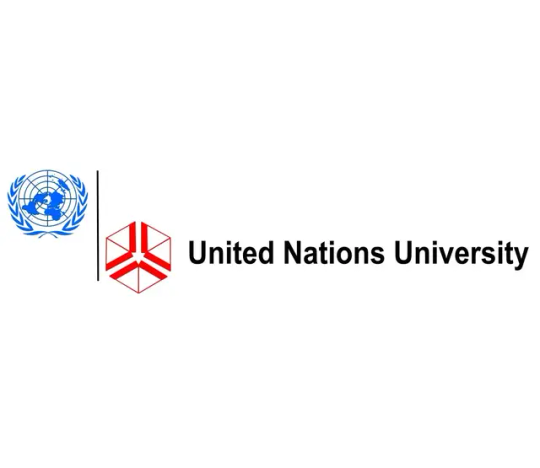
View On WordPress
0 notes
Text
« La vie sur la planète Terre est en état de siège »
See on Scoop.it - EntomoNews
Dans deux publications séparées, une coalition de chercheurs et l’ONU avertissent que nos conditions de vie risquent de basculer à cause du changement climatique en cours et appellent à un sursaut collectif pour éviter le pire.
Climat : « La vie sur la planète Terre est en état de siège », alertent des scientifiques
par Margaux Lacroux
publié le 25 octobre 2023
-------
NDÉ
Les publications
2023 state of the climate report: Entering uncharted territory | BioScience, 24.10.2023 https://academic.oup.com/bioscience/advance-article/doi/10.1093/biosci/biad080/7319571
"... Economic growth, as it is conventionally pursued, is unlikely to allow us to achieve our social, climate, and biodiversity goals. The fundamental challenge lies in the difficulty of decoupling economic growth from harmful environmental impacts"
Conclusions
"... Although global heating is devastating, it represents only one aspect of the escalating and interconnected environmental crisis that we are facing (e.g., biodiversity loss, fresh water scarcity, pandemics). We need policies that target the underlying issues of ecological overshoot where the human demand on Earth's resources results in overexploitation of our planet and biodiversity decline (figures 5a, S5; McBain et al. 2017). As long as humanity continues to exert extreme pressure on the Earth, any attempted climate-only solutions will only redistribute this pressure."
(...)
New UN University Report Warns about Risk Tipping Points with Irreversible Impacts on People and Planet | United Nations University, 25.10.2023 https://unu.edu/press-release/new-un-university-report-warns-about-risk-tipping-points-irreversible-impacts-people
The Interconnected Disaster Risks Report 2023 published by the United Nations University – Institute for Environment and Human Security (UNU-EHS) warns of six risk tipping points ahead of us:
Accelerating extinctions
Groundwater depletion
Mountain glaciers melting
Space debris
Unbearable heat
Uninsurable future
[Image] Pollinators like the endangered monarch butterfly play a vital role in our natural ecosystems and food systems.
Crédits : Chris F / Unsplash
via Accelerating extinctions - Interconnected Disaster Risks
https://interconnectedrisks.org/tipping-points/accelerating-extinctions
0 notes
Text
2023 Global Water Security Assessment - Press Conference.
youtube
Press Conference by Terry Duguid, MP and Parliamentary Secretary to the Minister of Environment and Climate Change of Canada; Prof. Kaveh Madani, Director of United Nations University Institute for Water Environment and Health; Dr. Charlotte MacAlister, Senior Researcher, United Nations University Institute for Water Environment and Health on Canada and the United Nations University Institute for Water Environment and Health on the outcomes of the 2023 Global Water Security Assessment. Briefing on the outcomes of the 2023 Global Water Security Assessment, the Director of United Nations University Institute for Water Environment and Health, Kaveh Madani today (23 Mar) said, “unless we make meaningful progress on SDG 6, we cannot deliver and fulfil the goals that we have by 2030.” SDG 6, part of the 17 Sustainable Development Goals, states that access to safe water, sanitation and hygiene is the most basic human need and is essential for human health and well-being, energy and food production, healthy ecosystems, climate adaptation, poverty reduction, and more. Talking to reporters in New York, on the margins of the 2023 UN Eater Conference, Madani said, “whatever we want to do and deliver would have a relationship and interdependence on water.” Presenting the data contained in the report, the United Nations University Institute for Water, Environment and Health Senior Researcher, Charlotte MacAlister, said, “if we really want to reflect the situation that people feel on the ground and help the most vulnerable and marginalized, we have to think about how they experience water insecurity, whether that's physical and mental health, or their inability to have a stable household income, and for water to be affordable to them.” Affordability, MacAlister, said, “is not assessed, not well assessed within the SDG six, and it was not assessed at all,” and stressed that “in the future, if we really do want to meet our development goals that needs to be addressed seriously.” Madani said, “as scientists, we are supposed to say the things that many policymakers are not talking about. So, that that gap between science and policy would remain there forever. And it's a constructive gap. You know, it's a positive thing to have.” He said, “we think that talking and speaking to people can change the game. The fact that we're showing that the progress has not been made, the fact that we are indicating this through valid data, reliable data, reliable measurements, can hopefully change the game.” The Global Water Security Assessment revealed that despite all efforts undertaken to date, the state of globally relevant water-related data on almost all water issues remains poor. The report – undertaken by the United Nations University Institute for Water Environment and Health (UNU INWEH), the UN’s only think tank on water – provides a preliminary quantitative global assessment that evaluates the state of water security for 7.78 billion people living in 186 countries. The 10 components of water security assessed are: drinking water, sanitation, good health, water quality, water availability, water value, water governance, human safety, economic safety, water resource stability.
#press conference#united nations#water#Global Water Security Assessment#World Water Assessment Report 2023#industrial water#commercial water#agricultural water#water security#SDG6#Youtube
0 notes
Text
Programme Assistant
Apply By: 31-10-2022
JOB DESCRIPTION
The United Nations University (UNU) is an international community of scholars engaged in policy-oriented research, capacity development and dissemination of knowledge in furthering the purposes and principles of the Charter of the United Nations. The mission of UNU is to contribute, through research and capacity building, to efforts to resolve the pressing…
View On WordPress
0 notes
Text
United Nations University Postgraduate Scholarship 2023-Apply Now
United Nations University Postgraduate Scholarship 2023-Apply Now
United Nations University (UNU-MERIT) Postgraduate Scholarship 2023: The University of United Nations Netherlands invites applications from suitably qualified candidates for their Merit Scholarship Program aimed at highly intelligent students wishing to study in their university. The scholarship details are outlined, apply now for scholarships
The United Nations University is comprised of the…
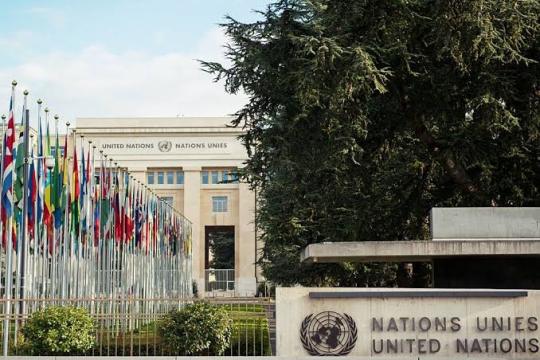
View On WordPress
#Latest Scholarship 2022#UN scholarships for African students#United Nations fully funded scholarship 2022#united nations scholarship 2022/2023#United Nations scholarship 2023#United Nations scholarship for international students#United Nations scholarship for Undergraduate#United Nations scholarship portal#United Nations Scholarships for African students 2022#United Nations Undergraduate Scholarships for international students#United Nations University courses#United Nations University PhD#United Nations University Postgraduate Scholarship 2023 Application Update#Who scholarships
0 notes
Text
Macmaster university address

#Macmaster university address professional
#Macmaster university address zip
This shines through in his ability to guide and teach in an effective, concise manner. Breadcrumbs Address: 1280 Main Street West Hamilton, Ontario L8S4L8 Country: Canada ID: CAN3 Course Modules/Subjects: Psychology and Behavioural Sciences. To top it off, Brad is an assistant professor at Ryerson Universitys School of Management.
#Macmaster university address professional
We are the only Canadian host site of a United Nations University (The Institute for Water, Environment and Health- UNU-INWEH) and are committed to engaging in issues that affect not only Canada, but the world. Because he has professional expertise, industry experience, and is knowledgeable about best practices, Brad is a particularly excellent coach. With students and faculty from well over 90 countries worldwide and 70 international exchange agreements in place, we celebrate diversity and welcome international perspectives. Home to some of the best minds and laboratories in the country, with research output rivalling universities more than twice its size, McMaster has a well-deserved reputation as a hotbed of discovery and innovation and is consistently ranked among Canada’s top research intensive universities.įrom combating disease to informing public policy, reducing environmental pollutants and manufacturing the next smart car, McMaster students and researchers are working collaboratively, across disciplines to address the most urgent needs in our society, improving quality of life, productivity and developing opportunities for communities across Canada and the world. In addition to McMaster’s renowned medical school, our professional schools in the Faculties of Engineering and Business are complimented by our commitment to teaching and research in the Faculties of Humanities, Social Sciences and Science. The McMaster community includes 21,441 undergraduate students, 3,519 graduate students, 1,413 full-time faculty and 170,654 alumni, based in 137 countries worldwide. One of only four Canadian Universities consistently ranked in the world’s top 100, McMaster has a proud tradition of academic and research excellence, evidenced by the achievements of our best and brightest whose ranks include three Nobel Prize winners, global business leaders, technological innovators, prominent politicians, public intellectuals, philanthropists and performers.Ī one-hour drive from Toronto and a one-hour flight from major American hubs New York City, Washington D.C and Chicago, our campus is located in the heart of one of the most vibrant and multicultural regions of North America. The Zhu lab has discovered a number of molecular interactions important for telomere maintenance and genomic stability.Since 1887, McMaster University has been dedicated to the cultivation of human potential, a commitment we demonstrate everyday through our ground-breaking approaches to teaching and learning and our world-class, interdisciplinary research.
#Macmaster university address zip
The Stone lab has developed a computational model to explain echinoid skeleton form and growth Street Address: 1280 Main Street West: City: Hamilton: State: ON: Zip Code: 00000: Associated Project Details for: McMaster University 2 Projects listed for this institution: R829500C004: Effects of Dietary Metal Exposure on Fish and Aquatic Invertebrates: Center.
The long term goal is use this knowledge to improve crop stress tolerance and sustainability.
3.5 million dollar Ontario Research Fund grant awarded to Drs Weretilnyk and Cameron to use next generation sequencing to reveal the incredible stress tolerance mechanisms of the Yukon native plant Thellungiella.
Herb Schellhorn and colleagues, to fund studies identifying diagnostic genetic determinant in E.
2.8 million dollar Ontario Research Fund awarded to Dr. McMaster University Medical Centre (MUMC) has a longstanding history of providing world-class healthcare to people within Hamilton and from across Ontario.
Using Drosophila heart as a model, the Jacobs lab has shown that integrins play important roles in cardioblast polarization.
The Gupta lab has developed novel worm microfluidics chips for neurodegeneration and drug discovery research (Rezai et al., Lab Chip).
The Daniel lab has discovered proteins that regulate Wnt pathway function in cancerous growth and metastasis.
It features a 500-bed residence and conference facility on floors 4 through 10.
The Campos lab has found that insulin signaling regulates feeding behavior in Drosophila Established in 1887 as the first public higher education institution in Ontario, Canada, McMaster University has been ranked among the best universities. This new 340,000 square foot building of multi-functional space opened in fall 2019 and is the largest building on campus.
The Bedard lab has uncovered new Src-kinase interacting genes associated with human cancers.

0 notes
Text
You Will Thank Us - 7 Tips On Seo Company You Should Know
Links and related sites: 214 SEO: Latest SEO shoppers include real property businesses, roofing, legal professionals and attorneys, insurance, internet consultants and gurus, internet sales, Google Maps and Places optimization. Hilda is answerable for managing the SEO Department group, planning methods, strategies, constructing out quotes and budgets for brand spanking new purchasers and coaching new employees. From seo , to aim planning and skill development, it is a time for people to attach both personally and professionally. An SEO Agency can provide help to handle the SEO affairs of what you are promoting and hoist you up the search engine ranks, leaving you with sufficient time to oversee different stuff in what you are promoting. However, we (the UNU, ITU and UNITAR) do course of data that is collected robotically by way of browser “cookies”, i.e. small items of knowledge despatched from this web site and stored in your system, in order to maintain your webpage consumer preferences, make the website work extra effectively, and compile anonymous reports to assist us improve the website. EZ Rankings has the plan and execution resources for every small business in any area of the world. First, how long has the company been in business? Mobile Marketing Services - Get greatest cellular advertising service at SEO Company Noida.
Continued use and looking of this webpage after such adjustments shall represent your consent to such changes. Nothing in these Terms of Use shall be deemed to be a waiver, categorical or implied, of the privileges and immunities of the United Nations University, United Nations Institute for Training and Research or the International Telecommunication Union, accorded to them below international regulation or any applicable nationwide legal guidelines. When you create a translation of this content, you need to add the following disclaimer together with the suggested quotation: “This translation was not created by the International Telecommunication Union (ITU), the United Nations University (UNU) or the United Nations Institute for Training and Research (UNITAR). In any use of the content material, there ought to be no suggestion that ITU, UNU or UNITAR endorses any particular organization, services or products. If you are getting irrelevant result, attempt a extra slim and particular time period. Relevant key phrases are specific to your business however not necessarily precise to your location. You’ll additionally hear about the safety vulnerability assessment challenge that GitHub’s Skills-Based Volunteering staff and the Norwegian Refugee Council are working on together.
1 note
·
View note
Text
E-waste Management Market, Size, Share 2021-2028
Market Overview
The Global E-waste Management Market is expected to grow at a high CAGR of 11.9% during the forecasting period (2021-2028).
E-waste is the electronics systems & products which are discarded, unwanted, and not working. The electronic waste contains stereos, televisions, copiers, VCRs, fax machines and computers which require electronic equipment management. Thus, the E-waste are dangerous due to presence of toxic chemicals, different complex types of materials which requires proper management. The E-waste management includes refurbishment, resale, disposals, reuse, salvage recycling through material recovery, which are considered e-waste is particularly that require shredding, sorting from the metals.
Download free sample: https://www.datamintelligence.com/download-sample/e-waste-management-market
Market Dynamics:
The market is driven by the rising the demand of the E-waste management due to increasing the sale of electrical & electronics devices globally. According to the International Solid Waste Association Report in 2019, the E-waste generated to around 53.6 Million tonnes around the globe and is projected to reach around 72 million tonnes by 2030. This is primarily due to growing demand for the advanced electronics & electrical devices. The organization also stated that the e-waste growing with of the approximately 2.01 billion metric tonnes from solid waste per year. This growth in e-waste is amplified demand for electronic and electrical equipment management business to reduce the wastage.
There is a rise in the adoption of the advanced technology electronics and electronics devices with growing government funding and subsidiaries for implementing the recycling technology to enhance the sustainable environment. For instance in 2020, as per the Global E-waste Statistics Partnership (GESP), the global e-waste has been increased by 21 % during the forecast period. Furthermore growing partnerships and government programs to monitor and manage the E-waste has created ample opportunity for this market. For instance on 2nd July 2020 International Solid Waste Association (ISWA) has been collaborated with United Nations University (UNU) and the International Telecommunication Union (ITU) to start the SCYCLE Programme to create The Global E-waste Monitor 2020 for addressing the e-waste challenge.
Segment Analysis
– By Material Type
· Glass for E-waste Management the industry
· Plastic
· Metal
· Others
– By Source Type
· Consumer Electronics
· Industrial Electronics
· Household Appliances
· Others Geographical Presentation
By region, the global E-waste Management market is segmented into North America, South America, Europe, Asia-Pacific, Middle-East, and Africa. Among all of the regions, Asia Pacific is the dominated region for the global E-waste management market and expected to grow at the highest CAGR during the forecasted period due to presence of huge population with increasing the sale of electronic devices followed by Europe region. According to the International Solid Waste Association Report, Asia generated around 24.9 million tonnes of E-waste due to increasing the adoption of advanced electronic and electrical devices which propels the demand for replacement of old device with new followed by North America.
North America and Europe are also growing at faster pace owing to increasing the demand for recycling units due to raising the adoption of advanced technology electronic and electrical devices. As per the above mentioned organization in America the e-waste generation per capita in 2019 was registered to around 13.3 kg whereas in Europe 16.1 kg. Furthermore in the same year America and Europe had been generated a total of 13.1 Mt and 12 Mt of E-waste which includes computers, stereos, televisions, copiers etc.
Competitive Analysis
The global E-waste Management market is highly competitive with the presence of several international and local markets. Product diversification, revenue generation, and opportunities intensify the market competition. Electronic Recyclers International, Stena Metall AB, Aurubis AG, MRI, MBA Polymers Inc, Waste Management inc., Enviro-Hub Holdings Limited, LifeSpan Technology Recycling Inc, SIMS Metal Management Limited, Boliden AB, Tetronics Limited, and Umicore SA are the leading market players with significant market share.
Companies are entering into the collaborations, acquisitions, mergers, and licensing for increasing their market penetration. For instance, on 22nd June 2017, MBA Polymers was acquired by the Müller-Guttenbrunn Group (MGG) to expand the plastic recycling plant product portfolio.
View Full Report: https://www.datamintelligence.com/research-report/e-waste-management-market
Enquiry Before Buying: https://www.datamintelligence.com/enquiry/e-waste-management-market
About Us
DataM Intelligence was incorporated in the early weeks of 2017 as a Market Research and Consulting firm with just two people on board. Within a span of less than a year, we have secured more than 100 unique customers from established organizations all over the world.
For more information:
Sai Kiran
Sales Manager at DataM Intelligence
Email: [email protected]
Tel: +1 877 441 4866
Website: www.datamintelligence.com
2 notes
·
View notes
Photo

April 19, 2017: Crown Princess Victoria attends a seminar on the UN sustainable development goals at the United Nations University (UNU) in Tokyo during an official visit to Japan.
#crown princess victoria#2017#victoria's engagements#un#victoria overseas#swedish royal family#random victoria
4 notes
·
View notes
Text
Poverty and Inequality: have we progressed from it?
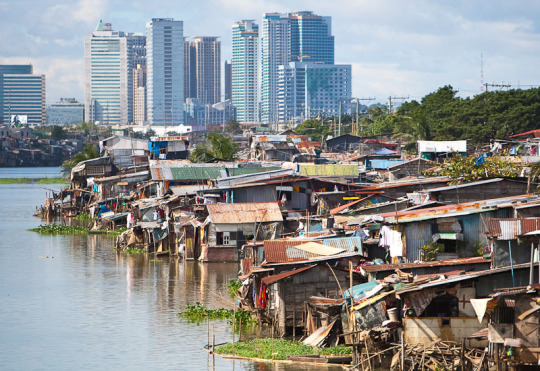
(source: https://grpshorts.blogspot.com/2014/07/how-do-we-solve-philippines-squatter.html)
Before I start, I have a question. Have you ever been to the slums or the squatter areas in your country - like in the image above?
No matter how rich and developed your country may be, these areas exist and in them are people whom our parents usually use as examples of who not to be in the future.
People who have no educational attainment, considered poor because of the lack of financial resources, no access to healthcare and clean water - people who are in poverty.
At the surface, we only know poverty as the poor or the needy people. Those who lack stable income to sustain or support themselves and, or, their families in terms of basic necessities - such as food, clothes, water and shelter.
However, is this all that poverty is? How does inequality affect poverty? Is the capitalist system the cause or the solution? Would globalization effectively decrease and end poverty?
Let me give you my opinion on these questions based on my own research (yes, I did my research) - will cite my sources at every section to prove it.
Anyways, relax and grab a drink. I am quite the talker so this may take longer than it should.
What exactly is poverty?
For starters, poverty is a situation we all find complex and a controversy. As Heywood (2011) would say, poverty, at the face of it, is simply a state of being deprived of life’s necessities - which was considered an absolute standard.
Why was it an absolute standard? Having no necessities makes it difficult to sustain human life. This is what constitutes being in absolute poverty.

(source: https://www.simplypsychology.org/maslow.html)
Absolute poverty is in accordance to Maslow’s hierarchy of needs (see image above) - hence, is established on the idea of physiological needs. In Maslow’s hierarchy, physiological needs are basic and should be prioritized.
Absolute poverty makes sense, it is how poverty is usually explained to kids when they are young (e.g. mothers telling their children to study well in order not to be poor). However it does miss an important aspect of poverty.
Relative poverty, on the other hand, covers what absolute poverty missed - the human factor. Rather than an economic phenomenon, it sees poverty as a social phenomenon. Why? Because there are people who can afford the basic necessities but feel poor because they do not have what others have.
Simply put, relative poverty is when the people feel deprived in terms of their standards, conditions and pleasures that most in the environment they live in enjoy.
Pasha (2014) also considers relative poverty as a classification of poverty but with a different definition. Relative poverty, according to Pasha (2014), is considered when a household’s income level is below the standard of the average national income.
On the other hand extreme and moderate poverty are (in my opinion) subcategories of absolute poverty. Extreme poverty is when the household cannot meet the basic needs for life survival and Moderate poverty is when you can afford it but only the bare minimum of it.
Any key trends in poverty and inequality globally?
According to World Bank (2020), global extreme poverty has been constantly decreasing over the last 25 years in 145 of their client countries. From their findings, the global extreme poverty rate fell from 10.1% in 2015 to 9.2% in 2017 - which, apparently, is equal to 689 million of the world’s population to live with on less than $1.90/day.
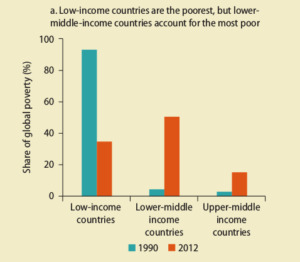
(source: https://gsdrc.org/topic-guides/poverty-and-inequality/trends-and-future-projections-for-extreme-poverty-and-inequality/poverty-situation-and-trends/)
We could assume that the economic growth among many countries has helped reduce poverty; nevertheless, there are still what we call the poorest countries who have the poorest population in terms of income. In Rohwerder (2016)’s article, they presented World Bank’s graph in 2016 comparing which countries (in terms of income, again) housed the most poor. As you can see above, in the 1990s the low-income countries housed most of the poor; though, in 2012 it showed that lower-middle income countries housed the most poor.
This just shows that, yes, economic growth may have played a role in poverty reduction; however, in turn, this possibly increased inequality - in terms of absolute inequality.
According to the Danish professor, Prof. Finn Tarp (n.d.), global inequality has been declining relatively yet absolute inequality measures contrast this finding. In the period of 1975 - 2010, global inequality considerably rose and the income growth present in India and China had very little effect on this.
I do not want to get technical since my understanding may be incorrect; but reading the discussion in Prof. Tarp’s presentation, centrist inequality trends uncovers a certain peak around 2005 and has, since then, significantly diminished.
Capitalism to poverty: eliminate or reinforce?
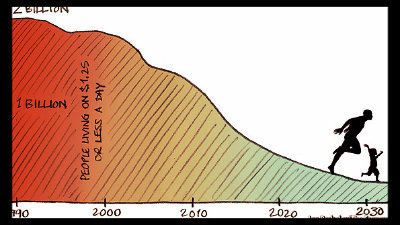
(source: https://borgenproject.org/capitalism-is-helping-end-global-poverty/)
Ideally, capitalism was meant to provide equal profit and opportunities for the benefit of everyone in the world. It was supposed to be a structure (?) that will distribute wealth between people and countries fairly and, in turn, eliminate both poverty and inequalities.
However, in reality, capitalism has been the driving mechanism of inequality between the rich and the poor. It continues to widen the gap between the rich and the poor since the system makes the rich richer, and those in poverty becomes even more poor.
So... in my opinion?
Capitalism meant to eliminate poverty however because of different factors (and well human error if I may add) this capitalist society we live in reinforces poverty. Why? Simply because of income inequality.
As I have discussed in my previous vlog about Capitalism, profits are made by means of consumers and consumers do labor in order to have profits which will fund their spending capability. However, private entities and companies alike wanted to profit more without affecting the price of their product - so they chose to decrease salaries of their laborers while also (somewhat) demanding them to spend.
Globalization: Increase or decrease global poverty?

(source: https://littleusgoneglobal.wordpress.com/2015/03/13/globalization-and-its-impact-on-the-caribbean-the-poverty-and-inequality-suffered/)
Alright, for this section I will state that I am basing purely from Andrew Heywood’s book titled Global Politics since their view is what I understood the best (and it is simpler to understand).
Globalization has always been a topic of debate whether or not we (as in all of us) will actually benefit or will it only benefit the ones who are already on top? Supporters of this will say ,“It will benefit all of us in the long run.”, and conclude that it is the most possible way to eliminate and narrow down both poverty and inequality worldwide - hence globalization should decrease poverty.
In addition to this, if you do research on globalization and poverty, most statistics will present data that proves globalization did decrease poverty in the global sense.
However, from what I observe, globalization has so far increased global poverty because it created internalized inequality within the countries as it defeated the inequality between them.
Also, Heywood (2011) stated that the theory of ‘trickle down’ (from what I understand is an important theory for globalization), which declares that the poor and the rich will equally benefit from the free-market policies in time by means of economic growth and a general rise in living standards, was debunked almost everywhere in the world.
Conclusion?
Global poverty and inequality is present all over the world. There has been many campaigns and solutions proposed to eliminate both of them for the benefit of human development however none has been proven as effective as the present solutions (capitalism and globalization). Though, in my belief at least, capitalism and globalization are one of the driving factors that increase global poverty and inequalities whether it be between countries or within the country.
That’s the end of that. Re-blog or drop an ask so we can discuss - I want to know your opinions on this matter.
References
Heywood, A. (2011). Poverty and Development. In Global Politics (pp. 352–382). Palgrave Macmillan.
Pasha, M. K. (2014). How can we end poverty? In J. Edkins & M. Zehfuss (Eds.), Global Politics: A new introduction (2nd ed., pp. 429–471). Routledge.
Rohwerder, B. (2016). Poverty and Inequality: Topic guide. Birmingham, UK: GSDRC, University of Birmingham.
Tarp, F. (n.d.). Global Inequality - Trends and Issues. United Nations University - UNU WIDER. https://www.wider.unu.edu/sites/default/files/Events/PDF/Presentation-slides-Global-inequality-Finn-Tarp.pdf
World Bank. (2020). Poverty. https://www.worldbank.org/en/topic/poverty/overview#:~:text=The global extreme poverty rate,%245.50 a day in 2017.
2 notes
·
View notes
Link
And our household is preparing to contribute to the waste, except I won’t dispose of the scores of gadgets and wires we have until I have confidence in, and access to, a reliable electronic waste recycling and distribution vendor. We have none in our area, so everything is just piling up in a storeroom in the basement.
This is an area that is screaming for some sort of federal law and federal disposal plan, but with the republicans doing what they do, nothing will happen until their power is degraded.

Excerpt from this story from Deutsche Welle/EcoWatch:
Billions worth of valuable metals such as gold, silver and copper were dumped or burned last year as electronic waste produced globally jumped to a record 53.6 million tons (Mt), or 7.3 kilogram per person, a UN report showed on Thursday.
Growing demand for electronic gadgets, mostly with short life cycles and few options for repair, has caused e-waste — discarded products with a battery or plug — to surge by more than a fifth in the past 5 years, according to the joint study by the United Nations University, the UN Institute for Training and Research, the International Telecommunication Union and the International Solid Waste Association. The report forecasts the amount of e-waste generated to top 74 Mt by 2030.
"We are seeing a growing middle class in many countries around the world, which a few years ago were really typical developing countries. And there is a very large backlog demand here," Rüdiger Kühr, director of the Sustainable Cycles Program at the United Nations University (UNU) and a co-author of the report, told DW, adding that a growing trend of things like cars and bicycles being electrified was also contributing to the menace.
The weight of e-waste produced in 2019 was equivalent to 350 cruise ships the size of the Queen Mary 2, one of the largest cruise ships in the world, the authors of the report said.
Less than a fifth of the scrap — which the authors referred to as "urban mine" — was known to have been properly collected and recycled, which means a vast bulk of the $57 billion (€50 billion) worth of valuable metals such as gold, copper and iron and other recoverable materials were dumped or burned rather than being collected for treatment and reuse.
3 notes
·
View notes
Text
Thoughts on Powers of X #1
Well, I did this for the one, might as well do it for t’other...

Well, any thought that this mini-series might be less weird than its companion was completely blown away by the very first page, which revealed that Powers of X (pronounced Powers of Ten) is going to be taking place in four different times:
Year One (X^0)
Year Ten (X^1)
Year One Hundred (X^2)
Year One Thousand (X^3)
...with each segment increasing by a power of ten, because apparently Hickman has decided he’d like to drive us all mad with math puzzles. That first page is a doozy of design, I must say, laying out four key moments (and four or three key players) in the past and future of mutant-kind, with the layout suggesting a parallel between all of these characters (as well as a suggestion that the guy in the Cerebro mask shares Charles’ lower facial features exactly.
Year One
We then get an un-interrupted six page sequence which, on the surface, seems the most normal but is anything but. The first page shows Charles Xavier strolling through a fair and sitting down on a bench to enjoy the weather and his good mood, although the symbolic connection between the dwarf ringmaster and the strongman and Xavier’s dream of mutantkind is quite ominous. Then someone who looks a lot like Moira McTaggart sits down next to Xavier, and this is where x-fan’s expectations all of the sudden get flipped upside-down. On the face of it, Charles meeting Moira around the same time that he first has his Dream of mutant/human co-existence would be quite normal...except that Moira’s tarot cards are depicting people and places in the Year One Hundred (more on this in a bit), and Moira is talking to Charles very familiarly, but he hasn’t actually met her yet.
This is where a little alarum bell goes off in my mind shouting “TIME-TRAVEL SHENANIGANS!”

This much-hyped scene turns out to be Charles reading Moira’s mind, but it’s very clear from what we’ve just seen that this is not the Moira we know. And if this Moira is a clone from the future (I’ll get into that in a bit), the publicity tag-line would make sense: after all, time travel to avert a bad future goes way back in X-Men, and often that time travel has involved things happening to Charles Xavier before he could get his X-Men off the ground.
However, we’ve never see anyone go back just to tell Charles what happens in the future, even though that would profoundly change the timeline just by changing his mind. Is this what turns Charles Xavier into the be-helmeted man in Year Ten with the very different dream? Or would informing him of the future change or prevent the events of Year Ten?
Year Ten
Probably the most straightforward sequence - and the best argument for why HoX and PoX should be viewed as two halves of the same story - this sequence shows us exactly what happened to Mystique after she went through the Krakoa portal in Washington Square Park in HoX #1.
It turns out that, as much as even Magneto is feeling the “hope-y, change-y” vibes, he, Mystique, and Professor X all have their own agendas regarding the information - note the running theme of the issue - that she pulled out of Damage Control’s servers.
Further ominous notes: Charles Xavier has never been a telekinetic, and yet here he clearly uses telekinesis to grab Mystique’s thumb drive. That’s very ominous, especially given what we learn about cloned mutants have multiple, spliced-in mutant powers. Also, Professor X’s comment about “everyone who would live in...a better mutant world...owes something” echoes ominously with the interstitial material’s description of Omega class mutants as a natural resource for the state.
Year One Hundred
The most conventionally super-heroic segment, this section shows us an all-too familiar dystopian scenario, with cyborgized humans and cerberus-like sentinels working together to not merely kill mutants but violate their minds and bodies. Further signs of what they’ve been up to comes in the literally black-brained ex-Hound who was genetically designed for infiltration and subversion of her own people.
A sign that mutants have adapted to this conflict by abandoning moral principles as well comes in the fact that the dead mutant in question is not only programmed to mind-wipe on death, but is repeating Professor X’s speech from Year 10. In a parallel to that era, it turns out that the mutant group who’ve been interecepted were downloading information from the Nexus
We also meet our two main characters in this epoch - the red-skinned Nightcrawler lookalike Cardinal (whose Tarot card is the Devil, “the red god and the lost cardinal of the last religion” (no idea what that means)) and the metal-skinned Soulsword-slinging Rasputin (whose Tarot card is the Magician, “the metal metapmorph, the great sword, and the girl with one foot in two worlds” (no idea what that means)). As we will learn later, these are not names but clone-types, because war has its own way of getting us to dehumanize ourselves in the pursuit of victory.
Important Interstitial #1: The Sinister Line
It wouldn’t be a Hickman comic without infographics, and this one was a doozy: at some point after Year 10, a crisis rocked the mutant nation which caused “the almost universal death or disappearance of senior leaders.” This crisis apears to have been engineered by none other than Mister Sinister in order to motivate the remaining mutant leadership into approving “breeding pits” located on Mars, where he could breed and clone mutants for “aggressive, militaristic traits,” to counter-balance the humans’ HOUND program. That’s a hell of a fall from grace.
We then learn that there were four generations of Sinister clones before the whole thing fell apart in a horrific calamity and yet further declension occurred:
First generation: straight-up clones of existing x-men, although the language of “divergent copies of a...pure, uncompromised X-gene” is as disturbing as you might expect from a Victorian eugenicist. (Are these the mass-produced units following from the prototypes we saw emerging from Krakoan cocoons in HoX #1?) Anyway, they all got turned into child soldiers to defend Krakoa until it eventually fell 30 years later. (Keep this date in mind.)
Second generation: combinations of only two x-genes, “mostly predictable.”
Third generation: combinations of up to five x-genes, apparently were wildly successful against the “Man-Machine Supremacy” and about to win the war, when...
Fourth generation: apparently were “produced with a corrupted hive-mind,” went rogue, destroyed 40% of all mutants, destroyed Krakoa, and then killed themselves taking out Mars and the Sinister pits therein.
And now we learn what our protagonists are: Rasputin is (seemingly) a fourth generation mutant with the combined powers of Quentin Quire, Piotr Rasputin, Unus the Untouchable, Kitty Pryde, and Laura Kinney, rather than Kitty and Colossus’ kid as some had feared. Notably, however, Rasputin doesn’t have the same gifts in the same strength as her progenitors: she’s half as strong a telepath as Quire, half as good as phasing as Kitty, half as good at healing as Laura, and about half as good at force-fields as Unus. The only places where she equals them is in turning into organic steel. BTW, if those powers seem somewhat redundant - why would you need to be intangible, made of organic steel, force-fielded, and self-healing all at the same time rather than focusing on just a few of those - well, clearly the intent was to create a tank and a half.
Meanwhile, Cardinal is a (seemingly third-generation) “outlier,” a failure in the breeding program that gradually got worse and worse. All Cardinals - and it’s not clear whether all Cardinals look like Nightcrawler - are pacifists and have “an obsession with creation myths,” and are extreme communitarians who reject individual identity. (Incidentally, Cardinal is where we get the religious through-line of the issue.) One question: if he’s a pacifist, why is he carrying a rapier? Genetic holdover from Kurt Wagner?
Which raises an important question...given that more than 60% of generation four were pacifists, how exactly did they carry out so thorough a massacre of their own people?
And finally we learn that all of this was Mister Sinister’s plan...which ended with his execution. I remain skeptical, because while I absolutely buy that Mister Sinister would arrange things so that he could run his eugenics programs, I don’t get why he’d self-sabotage in order to defect to such an unrelentingly hostile enemy.
Year One Hundred, Part 2
Here’s where we see the structure described as “the ower, the axis, the pillar of collapse and rebirth, the monolith of ascension.” (Keep your eye on that word.) Here we meet Nimrod the Lesser and Omega, and see the other side.
And what we find is a society where the machine is clearly beginning to become the dominant part of the Supremacy, despite a formal pretense at equality, a society where Nimrod makes polite noises at decency (”I am embarrassed and ashamed at what we did in the name of both expediency and annihiliation”), but then claps with childlike glee at the thought of getting to turn mutants into biological databanks.
(In a much less important interstitial, we learn that the HOUND program turned out to be a failure, with the scary ones being “ineffective hunters of their own kind,” and the majority of the black brains defecting en masse.)
Finally, we see an old man Wolverine, along with a green-suited Magneto, a very tree-like Black Tom Cassidy, and a Xorn, rendezvousing with the team to receive the data and bring them in touch with “the Old Man.” Which raises all kinds of questions as to when this happened vis-a-vis Mister Sinister’s betrayal.
Important Interstitial #2
In the wake of the fall of Krakoa, we learn that the once-burgeoning mutant population has been reduced to less than 10,000 refugees living in Shiar protected territory, with only 8 mutants left in the solar system...presumably the group we saw in part 2.
Year One Thousand
And now we find out what happened to our poor Hound, namely that she’s been stuck in a tube for 900 years, a crumbling historical manuscript beyond the ability of the Librarian to preserve.
As we move outside, we learn something critically important: that the “human-machine-mutant war” ended, with humans reduced to zoo animals kept in a nature preserve. Does this mean mutants won? Or did the machines do away with both their enemies and their allies?
28 notes
·
View notes